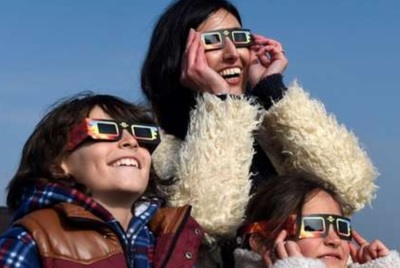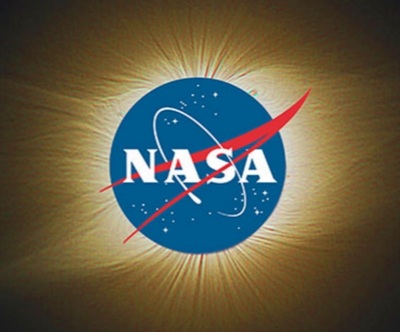Protect Your Eyes !!! Safety First !!! Protect Children
|
NEVER look directly at the Sun without proper protective eyewear:
before, during or after a solar eclipse. According to NASA, the following materials should never be used to view a solar eclipse:
If you are unsure about the safety of a viewing device, talk to an expert first before using it. The Risk Is Permanent Eye Damage or BLINDNESS!!! |
Video Links ~ Eclipses & Safe ViewingA solar eclipse is a memorable natural phenomenon and a great teaching and learning opportunity.
Edukasi.Zone has all the information you need to make this rare event a wonderful learning experience. Please Explore Our Site. CKICK on Images to get Additional information and Links. Maps ~ Times ~ WeatherEclipse Information from WikipediaAs seen from the Earth, a solar eclipse is a type of eclipse that occurs when theMoon passes between the Sun and Earth, and the Moon fully or partially blocks ("occults") the Sun.
This can happen only at new moon, when the Sun and the Moon are in conjunction as seen from Earth in an alignment referred to assyzygy. In a total eclipse, the disk of the Sun is fully obscured by the Moon. Inpartial and annular eclipses, only part of the Sun is obscured. If the Moon were in a perfectly circular orbit, a little closer to the Earth, and in the same orbital plane, there would be total solar eclipses every month. However, the Moon's orbit is inclined (tilted) at more than 5 degrees to the Earth's orbit around the Sun (see ecliptic), so its shadow at new moon usually misses Earth. Earth's orbit is called the ecliptic plane as the Moon's orbit must cross this plane in order for an eclipse (both solar as well as lunar) to occur. In addition, the Moon's actual orbit is elliptical, often taking it far enough away from Earth that itsapparent size is not large enough to block the Sun totally. The orbital planes cross each other at a line of nodes resulting in at least two, and up to five, solar eclipses occurring each year; no more than two of which can be total eclipses.[1][2] However, total solar eclipses are rare at any particular location because totality exists only along a narrow path on the Earth's surface traced by the Moon's shadow or umbra. An eclipse is a natural phenomenon. Nevertheless, in some ancient and modern cultures, solar eclipses have been attributed to supernatural causes or regarded as bad omens. A total solar eclipse can be frightening to people who are unaware of its astronomical explanation, as the Sun seems to disappear during the day and the sky darkens in a matter of minutes. Since looking directly at the Sun can lead to permanent eye damage or blindness, special eye protection or indirect viewing techniques are used when viewing a solar eclipse. It is technically safe to view only the total phase of a total solar eclipse with the unaided eye and without protection; however, this is a dangerous practice, as most people are not trained to recognize the phases of an eclipse, which can span over two hours while the total phase can only last up to 7.5 minutes for any one location. People referred to as eclipse chasers or umbraphiles will travel to remote locations to observe or witness predicted central solar eclipses.[3][4] ~ Wikipedia ~ |
* This Web Site is Sponsored by PT. RuLab Daya Kreasi in cooperation with Rutherfurd Laboratories USA ~ RuLab.org *
Proudly powered by Weebly


















